The only crested tit in most of its range wears a black front with yellow cheeks and eyebrows.
Meet the Indian Black-lored Tit
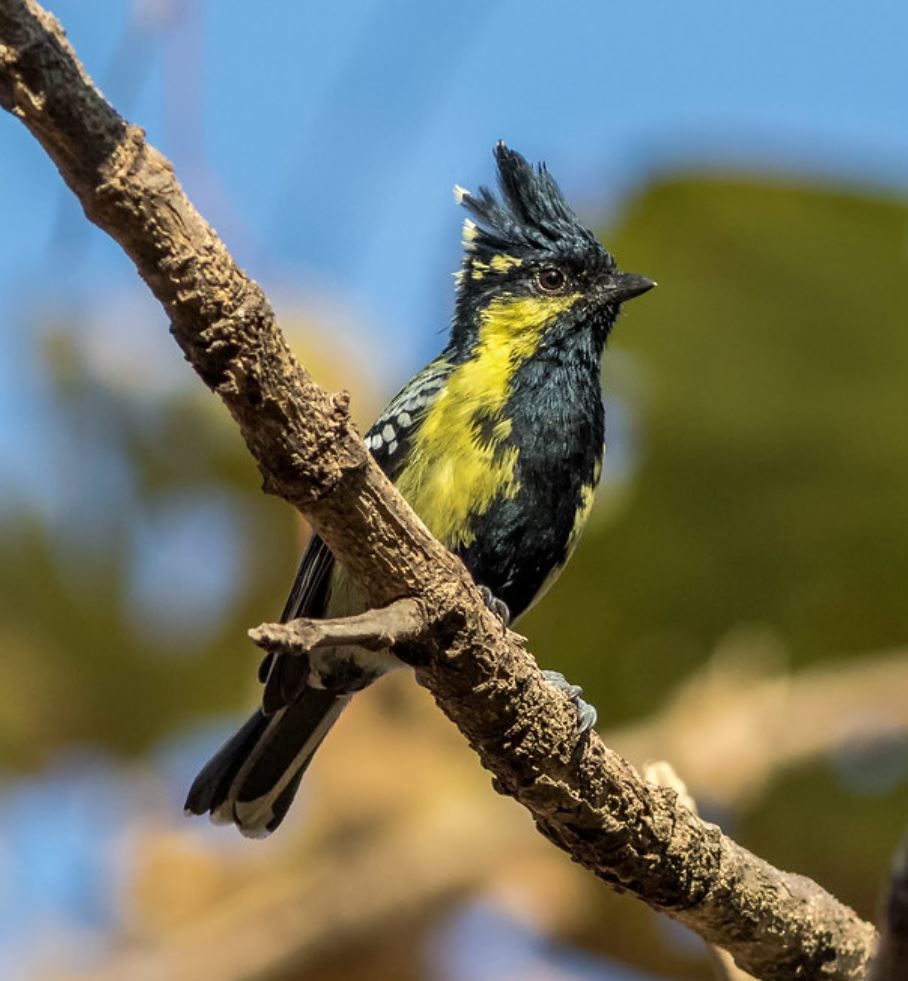 “Indian Yellow Tit” by Yogendra174 is licensed under CC BY 2.0. (cropped)
“Indian Yellow Tit” by Yogendra174 is licensed under CC BY 2.0. (cropped)
The Indian Black-lored Tit (Machlolophus aplonotus), also known as the Indian tit, Indian yellow tit, belongs to the passerine bird family Paridae. Its closest relative is the yellow-cheeked tit, which shares the yellow tit distinction. This bird’s distinctive appearance makes it easily recognizable across most of India. It features a large crest, black neck, throat, and head, with yellow cheeks and supercilia. Its upper parts display olive-green tones with two white or yellowish wing bars, complemented by white outer tail feathers.
The coloration of their underparts gradually diminishes in vibrancy from the northern to the southern regions within the range of this tit species.
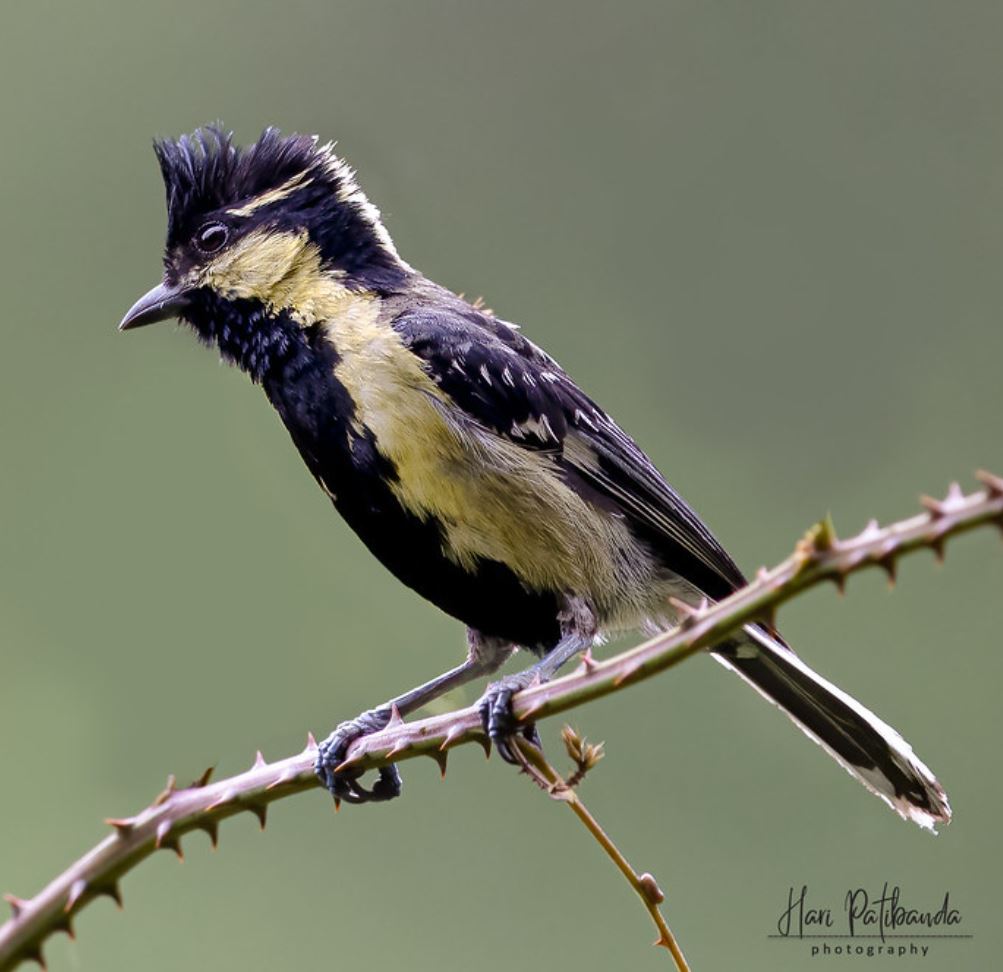 “An Indian Yellow Tit on a lovely perch” by Hari K Patibanda is licensed under CC BY 2.0. (cropped)
“An Indian Yellow Tit on a lovely perch” by Hari K Patibanda is licensed under CC BY 2.0. (cropped)
This tit species is a resident breeder across the Indian subcontinent. Known for its high activity and agility, it is a diligent feeder.
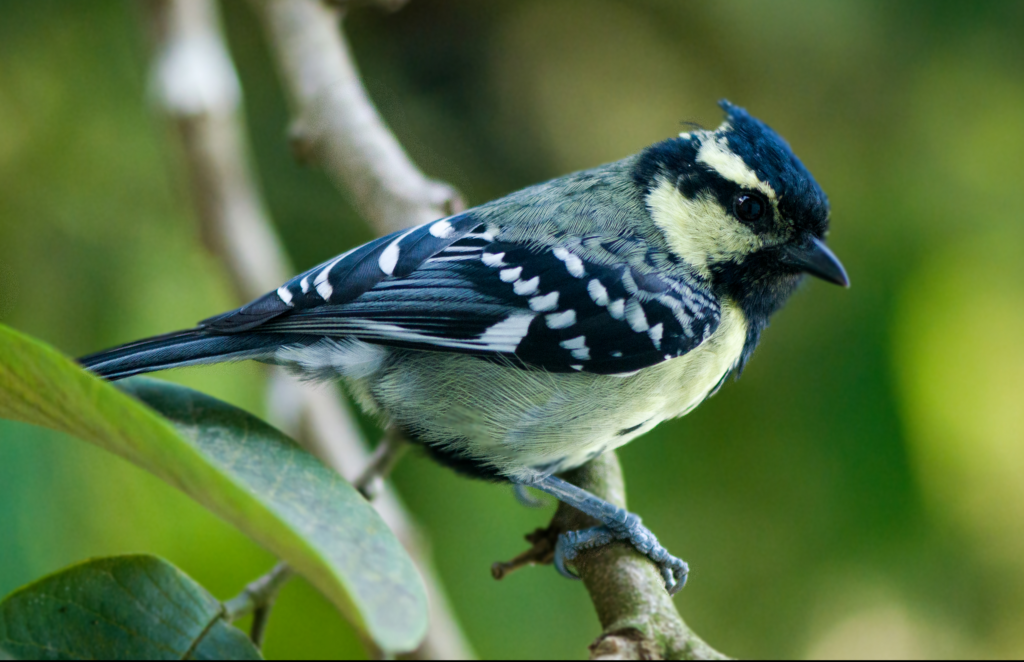 “File:Indian black-lored tit.jpg” by Uajith is licensed under CC BY-SA 3.0.
“File:Indian black-lored tit.jpg” by Uajith is licensed under CC BY-SA 3.0.
It is a common bird in open tropical forested areas. During the non-breeding season in May, mixed-species foraging flocks are observed.
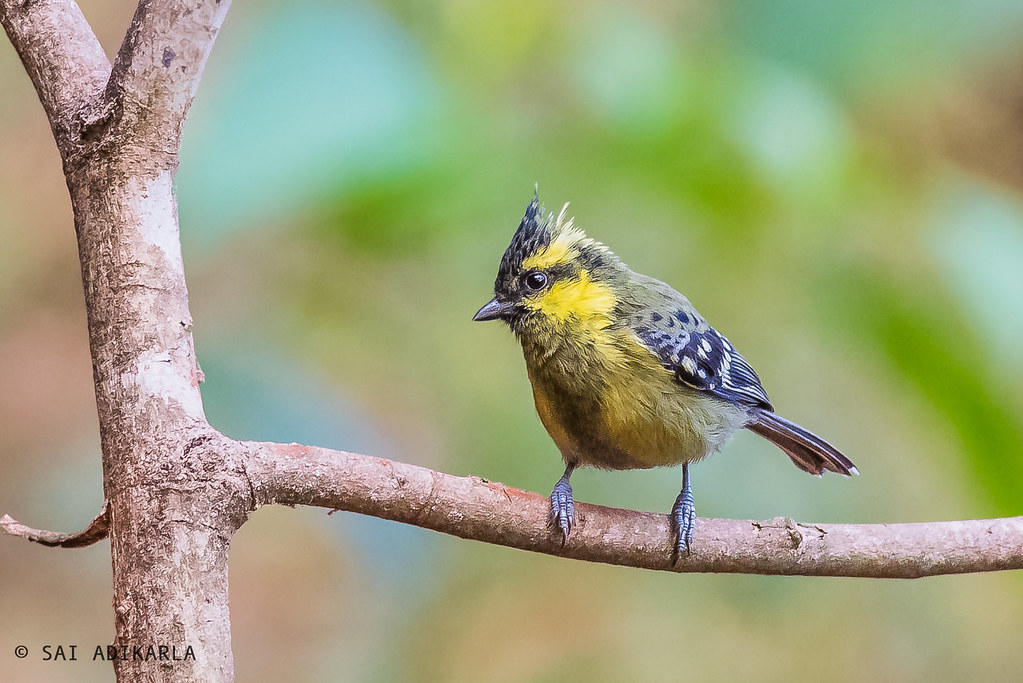 “Indian Black-lored Tit” by Sai Adikarla is licensed under CC BY 2.0.
“Indian Black-lored Tit” by Sai Adikarla is licensed under CC BY 2.0.
Similar to other tit species, the Indian Black-lored Tit is vocal and possesses a diverse range of calls. Its most recognizable call is a si-si, and its song is a sometimes nuthatch-like chi-chi-chi, “tzee-tzee-wheep-wheep.”
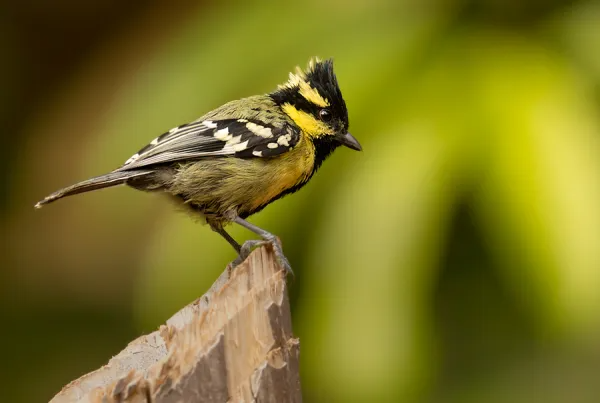 “File:Indian yellow tit (Parus aplonotus).jpg” by Prajwalkm is licensed under CC BY-SA 3.0.
“File:Indian yellow tit (Parus aplonotus).jpg” by Prajwalkm is licensed under CC BY-SA 3.0.
In terms of diet, the Indian Black-lored Tit consumes small invertebrates, larvae, and fruits. It captures insects and spiders from the forest canopy. This bird is commonly found in open tropical forests and stands at a size of 13 cm. Its notable features include a broad black stripe down an otherwise yellow front.
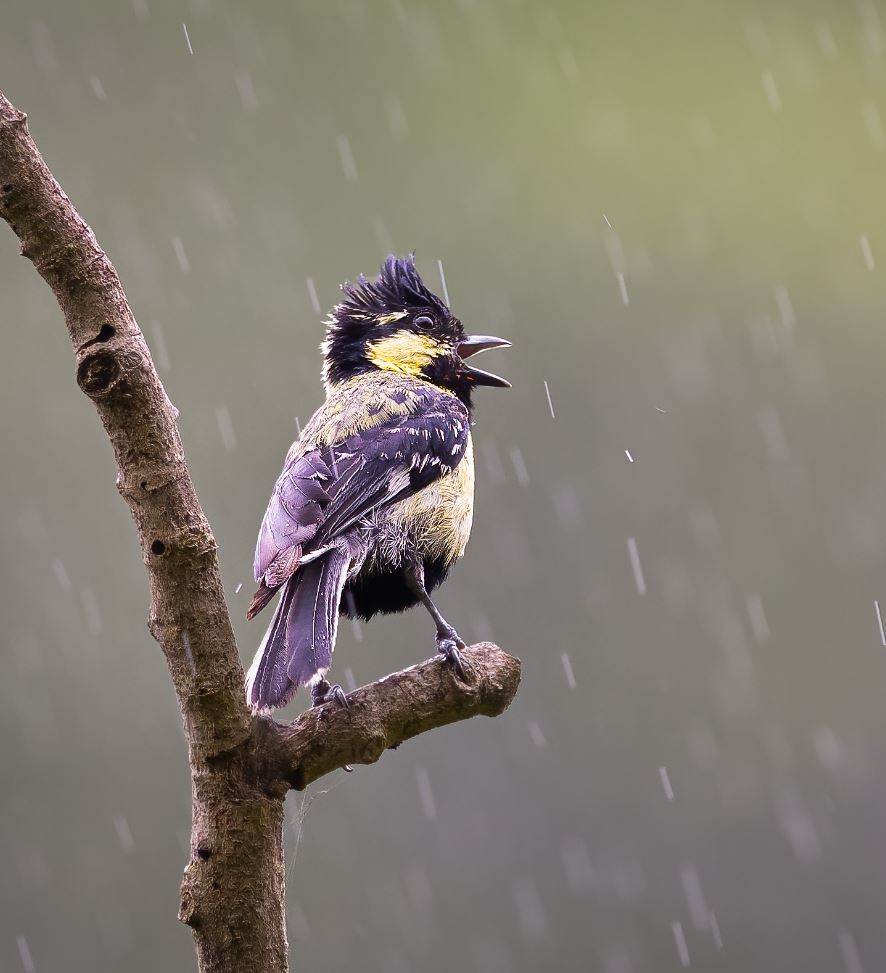 “A Rare Indian Yellow Tit in the drizzle (51321248401)” by Hari K Patibanda is licensed under CC BY 2.0. (cropped)
“A Rare Indian Yellow Tit in the drizzle (51321248401)” by Hari K Patibanda is licensed under CC BY 2.0. (cropped)
Breeding typically occurs in April, with nests situated in tall trees. These birds utilize existing woodpecker or barbet holes as well as create their own holes or make use of man-made sites for nesting. A typical clutch consists of 3 to 5 white eggs, often spotted with red. The Indian Black-lored Tit is known to be a close sitter, emitting a hissing sound when disturbed. Formerly classified in the genus Parus, this bird species was reclassified under Machlolophus after a 2013 molecular phylogenetic analysis revealed that the members of the new genus formed a distinct clade.
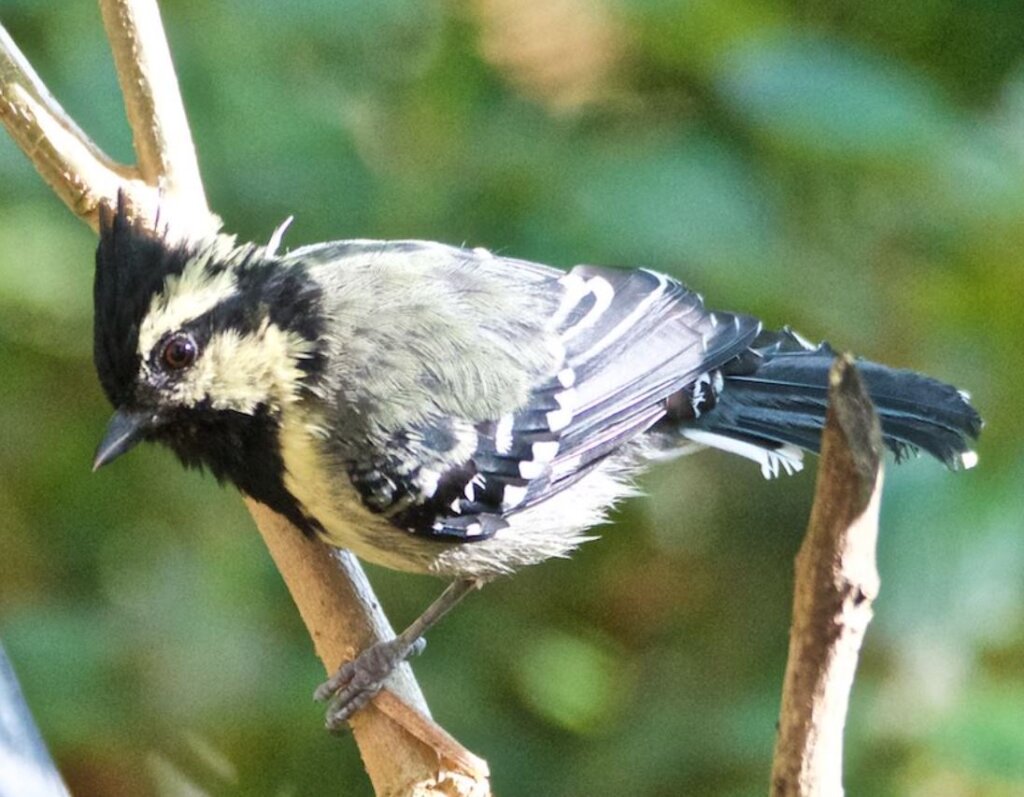 “BVR_8496” by Bird Brian is licensed under CC BY 2.0. (cropped)
“BVR_8496” by Bird Brian is licensed under CC BY 2.0. (cropped)
Although the Yellow Tit might have been uncommon historically, its population has dwindled further due to the deforestation of broadleaved forests. It struggles to adapt to marginal habitats such as edges, scrublands, conifer plantations, and bamboo areas.
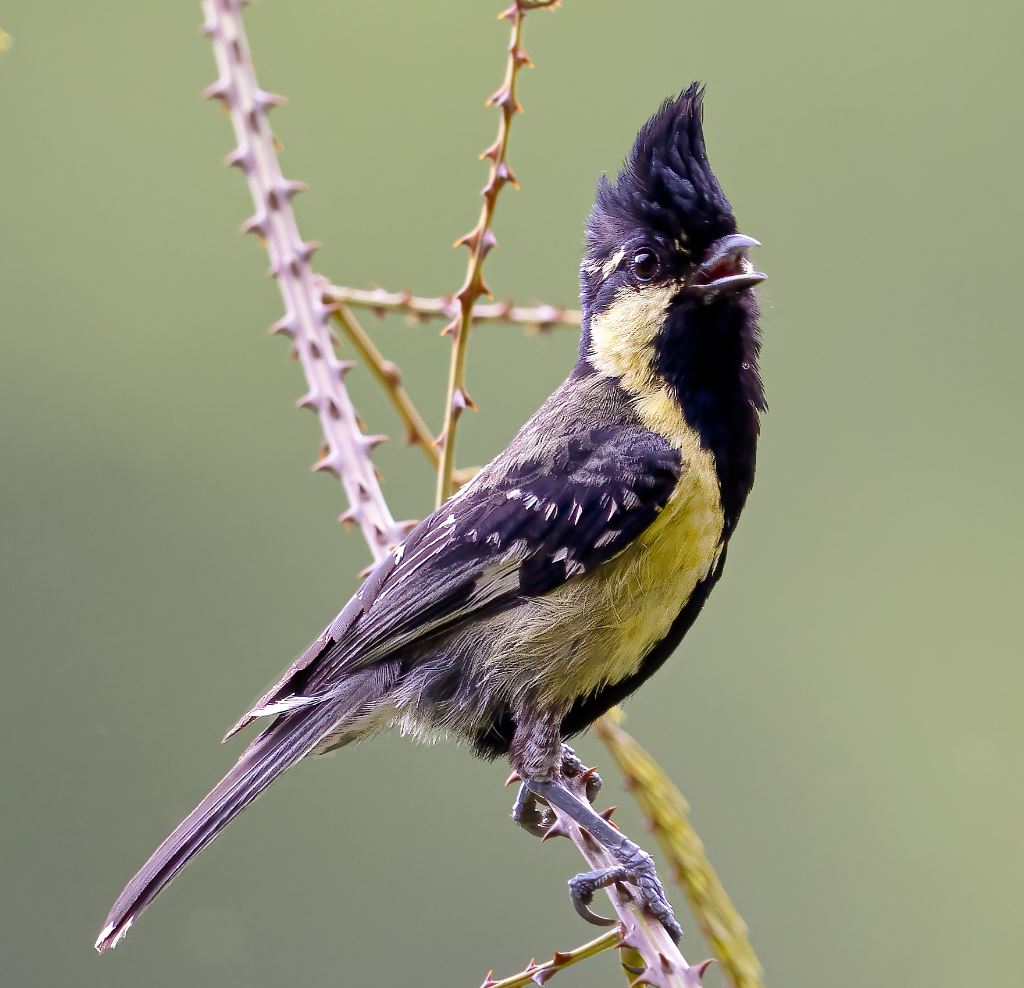 “An Indian Yellow Tit Calling for its Partner (51331880413)” by Hari K Patibanda is licensed under CC BY 2.0. (cropped)
“An Indian Yellow Tit Calling for its Partner (51331880413)” by Hari K Patibanda is licensed under CC BY 2.0. (cropped)
Listen to this bird right here:
This article uses material from Wikipedia.org which is licensed under the GNU Free Documentation License via Copyright Wikipedia. Images on this page are the sole property of the photographers (unless marked as Public Domain). Please read the license and or contact the photographers directly before using them for any purpose. Thank you all.
Layer Upon Layer Of Bright Yellow Fluff Is Offset By A Pair Of Beaming Bright White Headlights!
Please SHARE this article with all your bird-loving friends and family.

